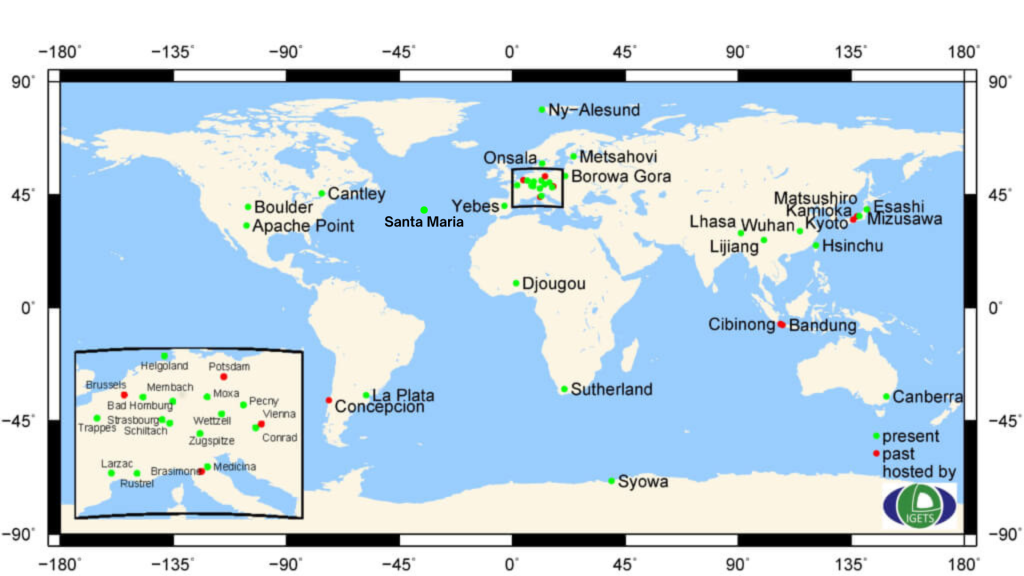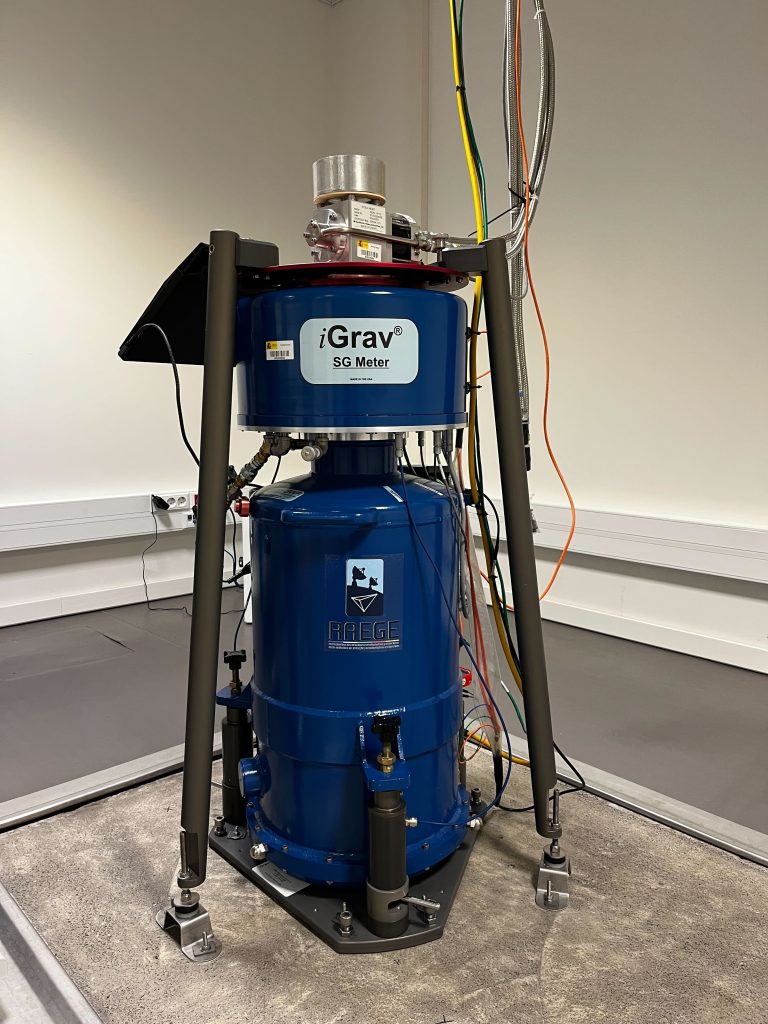GRAVIMETRY
Gravimetry is the science that studies the gravitational field of the Earth and its variations, based on measuring the acceleration by which this field manifests itself. When talking about the Earth’s gravitational field, it does not only refer to the gravitational force exerted by the Earth, but also to all the forces that act on any body at rest on its surface. In other words, any body on or near the surface of the Earth is subject to the action of several forces, mainly the following three:
- Newtonian attraction of Earth’s mass (gravitation).
- Centrifugal force exerted by Earth’s rotation.
- Attraction generated by other celestial bodies in the solar system (tidal force) (See Fig.1)
The resultant of all these forces is called the force of gravity and is characterized by being a function of position and time.

[Ref.] https://moon.nasa.gov/moon-in-motion/tides/
WORKING PRINCIPLES
Gravimetry studies the space-time variations of the Earth’s gravitational field, using multiple techniques and different types of instruments. The following methods stand out:
• Spatial methods: These methods compute the difference in gravity between two or more refernece points. The values obtained at these reference points are used to model the behavior of gravimeters. These models are later used to correct observations made at other points.
• Temporal methods: These methods determine the difference in gravity over time at a single point. These differences can be obtained by single or continuous measurements, depending on the characteristics of the gravimeter.
• Space-time methods: Currently, the most widely used methods combine the two previous methods (spatial and temporal). It consists of observing multiple points within a given area for a given period of time, to analyze their temporal evolution.
The gravity variations can be classified according to its’ origin:
• Global changes in gravity: Caused by circumstances of a sufficiently significant magnitude that generate a global range variation. Among other causes, this type of variation is related to changes in the Earth’s axis of rotation, in the distribution of convective masses (atmosphere, hydrosphere, and Earth’s mantle), or with large-scale seismic events. Global variations are currently studied mainly with the records of space missions such as GRACE (Gravity Recovery and Climate Experiment), GOCE (Gravity field and Ocean Circulation Explorer), and CHAMP (Challenging Mini-satellite payload).
• Regional severity changes: These changes are those that occur in large areas of the planet (hundreds and thousands of km). They are characterized by generally having a long period or a clear trend. Examples of this type of change can be found at tectonic plate boundaries, where fractures occur after periods of stress accumulation. Examples can also be found in intraplate zones due to post-glacial rebound, sedimentary compaction, and regional neotectonics. At mid-ocean ridges, regional uplift, the gravity decrease on the rift flanks, and rises in the central part which can be easily detected. The amplitudes of these regional variations can reach tens of µGal [1 Gal = 1 cm/s2].
• Local gravity shifts: These gravity variations caused by a variety of reasons, such as tectonic and volcanic earthquake activity at plate boundaries, as well as, in interior areas of the plate. These variations are located in small areas. One should also take into account all possible local changes generated by large bodies of groundwater in the study area and, albeit with lesser relevance, changes generated by human action.
INSTRUMENTATION
Depending on the application of the observations there is interest in measuring the absolute value of gravity and in other cases the variation (temporal or location dependent) of gravity. A distinction is thus made between absolute and relative measurements of gravity, using different instruments in each case.
• Absolute gravity measurements: The total value of the acceleration of gravity at the point of observation (modulus of the vertical component of the acceleration of gravity) as a function of the fundamental observables, distance and time are determined by the absolute gravity measurements. Traditionally, two fundamental measurement methods have been distinguished:
- Pendulum method (no longer used today);
- Free fall method, based on the repeated fall of a mass in a vacuum and on the monitoring of its trajectories through the simultaneous collection of pairs of distance and time.
• Relative Gravity Measurements: All relative gravimeters are based on the balance of forces to measure variations in the gravity field between two different points or between two time points. This instrumentation is mainly divided into 3 groups:
- Pendular gravimeters;
- Spring Gravimeters: They are based on the stretching of a spring from which a mass hangs. When subjected to the action of the gravitational field and using a force to counteract changes in the field, the mass is kept in balance and therefore the gravimetry measured.
- Superconducting Gravimeters (SG): The suspension of mass using a spring is replaced by the magnetic levitation of a superconducting sphere. The introduction of SG in the 1980s drastically improved all studies of temporal gravity variations. Unlike spring gravimeters, the SG are characterized by unprecedented long-term stability, higher accuracy and significantly lower instrumental drift. By using magnetic levitation instead of a mechanical device, problems of mechanical and thermal effects are avoided. In Fig.2, the superconductive gravimeters network is depicted.

[Ref.] IGETS http://igets.u-strasbg.fr/
IGN Spain has several pieces of equipment from the last two groups.


PRODUCTS
The results obtained from gravimetric observations are translated into a series of products, in the form of networks or cartography, which serve as a gravimetric framework at national and international level.
Gravimetric networks are created from stations where gravity has been determined with absolute or relative instruments. Depending on the data generated and its extent, they are classified as zero-order, first-order, second-order or local networks.
In Spain, IGN has the task of developing and maintaining the REGA network (Spanish Absolute Gravimetry Network), which is made up of more than 130 stations distributed throughout the Spanish national territory.
APPLICATIONS
Gravimetry is used both for the knowledge of the gravitational field and for other fields of study in which this knowledge intervenes in an auxiliary way, transforming the technique into multiple applications, among which the following stand out:
- Geoid determination (See Fig.5);
- Study of the Earth’s internal properties;
- Monitoring of volcanic processes;
- Prospecting for hydrocarbons and mineral resources;
- Archeology;
- High precision leveling;
- Studies on climate change;
- Determination of Earth orientation parameters;
- Metrology.
On the other hand, if we focus on the data recorded by superconducting gravimeters, the most common are:
- Historical records for the study and analysis of terrestrial tides;
- Applications in hydrology and volcanology, detecting variations and mass movements;
- Study of geodetic signals related to the different movements of the poles;
- Global geodynamic studies.

[Ref.] Image by GGOS.
